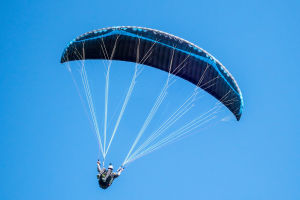Sailing is an ancient and captivating water sport that combines maritime technology, wind power utilization, and tactical strategy.
Whether as a leisure activity or a competitive sport, sailing attracts countless enthusiasts.
Below, we will delve into the fundamental principles of sailing, its historical development, and the enjoyment and challenges it brings.
Fundamental Principles
At the core of sailing is the use of wind power to propel the boat. The primary source of power for a sailboat comes from the sails. When the wind blows against the sails, it generates a forward thrust, propelling the boat in the direction it is intended to go. This process involves several key physical principles:
1. Wind Dynamics: The shape and angle of the sails determine how wind power affects the boat. The design of the sail is similar to an aircraft wing, generating lift and thrust. Wind flows over both sides of the sail, creating a pressure difference that pushes the boat forward.
2. Force Balance: A sailboat relies not only on wind power but also needs to counteract water resistance. The design of the boat must ensure balance to prevent capsizing. The shape of the hull, the position of the center of gravity, and the arrangement of the sails all affect the boat's stability and sailing performance.
3. Rudder Function: The rudder is used to control the direction of the boat. By adjusting the angle of the rudder, the crew can change the boat’s course, achieving precise navigation.
Historical Development
The history of sailing dates back to ancient times. The earliest sailboats may have appeared around 3000 BCE in ancient Egypt, where rudimentary sailboats were used for trade and navigation. Over time, sailing technology advanced, especially during the medieval period when sailboats became crucial maritime tools.
During the 15th and 16th centuries, the Age of Exploration in Europe saw significant breakthroughs in sailing technology. Explorers such as Columbus, Vasco da Gama, and Magellan used sailboats for global exploration, opening new routes and trade pathways. The design of sailboats became more complex and efficient during this period, with many modern sailing design principles originating from this era.
In the 19th and 20th centuries, sailing gradually evolved into a competitive sport. Organizations such as the International Sailing Federation (ISAF) and various sailing events (like the America’s Cup and Olympic sailing competitions) have promoted the growth of sailing, making it a popular sport.
Enjoyment and Challenges
Sailing combines technology, strategy, and natural forces, providing a unique experience and challenges. Firstly, sailing requires technical skills and tactical intelligence. Mastering sail adjustment, wind utilization, and adapting to various weather conditions are essential skills.
Secondly, sailing is also a highly enjoyable recreational activity. Whether on lakes, oceans, or rivers, maneuvering a sailboat under the power of the wind provides an unparalleled sense of freedom. For many, sailing is not just a sport but a way to connect closely with nature.
Additionally, sailing has a strong social aspect. Many sailing enthusiasts make numerous like-minded friends by participating in races, joining clubs, or organizing events. Sailing competitions often involve teamwork, where crew members must coordinate closely to achieve the best results.
Conclusion
Sailing is a sport full of charm, encompassing not only the technical use of wind power to propel boats but also elements of mechanics, engineering, tactics, and teamwork.
With ongoing technological advancements and growing popularity, sailing will continue to attract more people, offering an exciting and fulfilling way to engage in sport.


